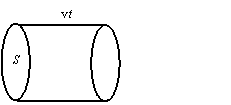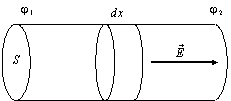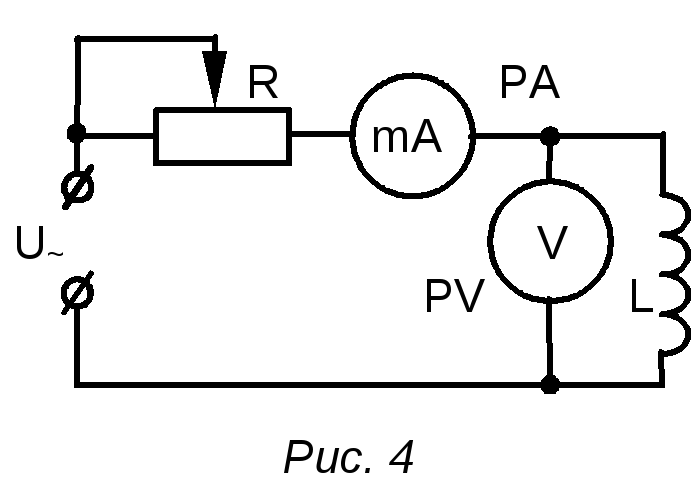Physics: Studying the application of Ohm's law for DC circuits, Laboratory work. Laboratory work. Study of Ohm's law for a section of a circuit
Ohm's and Kirchhoff's laws
Laboratory work No. 1
in the discipline "Electrical engineering and electronics"
Goal of the work:
1. General guidelines
The experimental part of the laboratory work is performed virtually using the Electronics Workbench program, which simulates a real electronics laboratory equipped with measuring instruments operating in real time. Version 4.1 of this program is located in the Avanta IOS (see the “Materials” item in the menu, Tools).
Before performing laboratory work, the student must familiarize himself with the Electronics Workbench program and study the materials of lesson No. 1 "BASIC CONCEPTS OF THE THEORY OF ELECTRIC CIRCUITS. OHM'S AND KIRCHHOFF'S LAWS AND THEIR USE FOR CALCULATIONS OF ELECTRIC CIRCUITS."
Laboratory work is carried out in accordance with its option.
The report on laboratory work must contain: a title page, a statement of the purpose of the work, diagrams of the circuits under study, tables with the results of measurements and calculations, conclusions about the work done. Text pages must correspond to A4 format, Times New Roman font – 12 pt, alignment – width, red line (indent) – 1.25 cm, line spacing – 1.5, automatic word wrap.
2. Example of performing work and preparing a report
2.1.Lab report title page
Ministry of Education and Science of the Russian Federation
Vladivostok State University
economy and service
Department of Electronics
for laboratory work No. 1
in the discipline "Electrical engineering and electronics"
Ohm's and Kirchhoff's laws
gr. _____________ _____________________ ()
Teacher
assistant professor _____________________
Vladivostok 200__
2.2. Completing of the work
Goal of the work: experimental verification of the operation of Ohm's and Kirchhoff's laws, study of the relationship between the parameters of measuring instruments and the accuracy of measurements.
1. In the Electronics Workbench program, select the necessary radio elements and assemble a circuit, the diagram of which is given in the task (Scheme 1).
EMF source E = 50 V;
source resistance Ri = 2 kOhm;
load resistance Rн = 20 kOhm.
1.1. Let's connect the measuring instruments in accordance with diagram 2. Set the parameters of the measuring instruments:
resistance of voltmeters V1 and V2 RV = 250 kOhm;
ammeter resistance A RA = 0.3 Ohm.
We get the following picture on the screen:
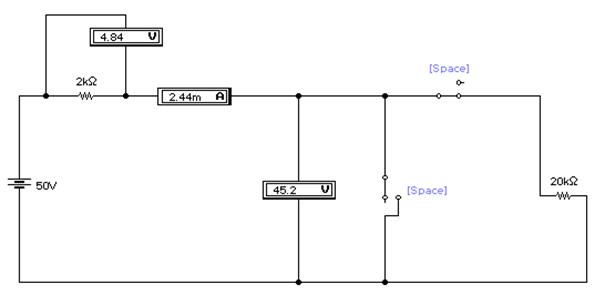
Rice. 1.1. Circuit diagram assembled in Electronics Workbench
1.2. Let's check the fulfillment of Ohm's law for the complete circuit (key SA2 is closed, key SA1 is open). To do this, you need to use a voltmeter V1 to measure the voltage Ui on the resistor Ri, with a voltmeter V2 - the voltage Un on the resistor Rn and with an ammeter A - the current I. We received the measurement results after turning on the circuit, as shown in Fig. 1.1: I=2.44mA; Ui=4.84V; Un=45.2V.
Let's calculate the voltage across the resistor Ri, the voltage across the resistor Rn and the current in the circuit using the Ohm formula. To do this, you need to find the equivalent circuit resistance:
Req = Ri + Rn = 2 + 20 = 22 kOhm.
The current in circuit I will be equal to:
I = E/Req = 50/22 "2.27 mA.
where Imeas – measured current value;
Icalc – calculated current value.
Ui = IRi = 2.27 mA × 2 kOhm = 4.54 V.
Load voltage Un:
Un = IRn = 2.27 mA × 20 kOhm = 45.46 V.
Let's find the relative errors in measuring voltages dUi and dUn:
where U and measured; Unmeasured – measured voltages across the source resistance and load;
Ui calc; Un calculated – calculated voltages across the source resistance and load.
Let's enter all measured and calculated currents and voltages into the table. 1.
1.3. In the circuit under study, we open the key SA2, thereby implementing the idle mode. Let's take the readings of the measuring instruments (Fig. 1.2): I = 198 μA; Ui=394mV; Un=49.6V.
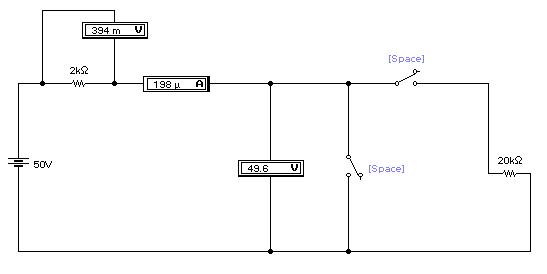
Rice. 1.2. Idle mode
Let's check the measurements with theoretical calculations.
IN ideal conditions the current in the circuit in idle mode is zero: I=0. It follows from this that the voltage across the source resistance will also be zero: Ui=IRi=0. The voltage at the load will be equal to the voltage of the EMF source: Un=E=50V.
We see that the readings of voltmeters V1 and V2 and ammeter A differ from these data. This occurs due to the imperfection of measuring instruments, which have their own resistance.
Let's calculate the relative error in measuring the voltage at the load:
Let's enter all the data obtained into the table. 1.
1.4. Now let's implement the short circuit mode. To do this, close the key SA1. Let's take the readings of the measuring instruments (see Fig. 1.3): I=49.6 mA; Ui=49.5mV; Un=0V.
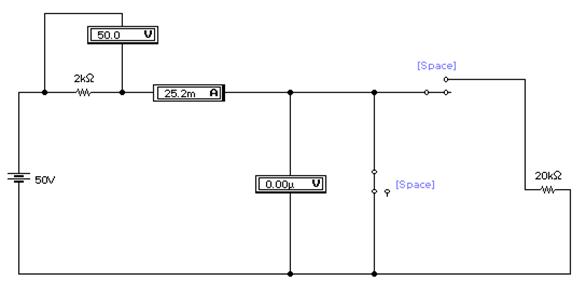
Rice. 1.3. Short circuit mode
Let's check the measurements with theoretical calculations. Let's calculate the voltage across the resistor R and the current in the circuit.
The current I in the circuit will be equal to:
I = E/Ri = 50/2 » 25 mA.
Let's compare the measured and calculated current values. To do this, let's find the relative error in current measurement dI:
Voltage across source resistance Ui:
Ui = IRi = 25 mA × 2 kOhm = 50 V.
This matches the voltmeter reading. Relative voltage measurement error dUi=0.
The voltage across the load is zero, since the load resistance Rн=0.
Let us enter all the obtained results of calculations and measurements into the table. 1.
Table 1
Results of measurements and calculations of voltage and current in the circuit
U and measured, kOhm | Unmeasured, kOhm | Un calc, kOhm | |||||||
Ohm's law for a complete circuit | |||||||||
Idle mode | |||||||||
Short circuit mode |
2. In the Electronics Workbench program, select the necessary radio elements and assemble a resistive circuit, the diagram of which is given in the task (Scheme 2).

Let's set the parameters of the circuit elements:
EMF of the first source E1 = 12 V;
EMF of the second source E2 = 15 V;
resistance R1 = 1 kOhm;
resistance R2 = 2 kOhm;
load resistance Rн = 3 kOhm.
2.1. Let's connect the measuring instruments in accordance with resistive circuit diagram 2. Set the parameters of the measuring instruments:
resistance of voltmeters V1, V2 and V3 RV = 350 kOhm;
resistance of ammeters A1, A2 and A3 RA = 0.2 Ohm.
In Fig. Figure 2.1 shows the diagram we assembled.
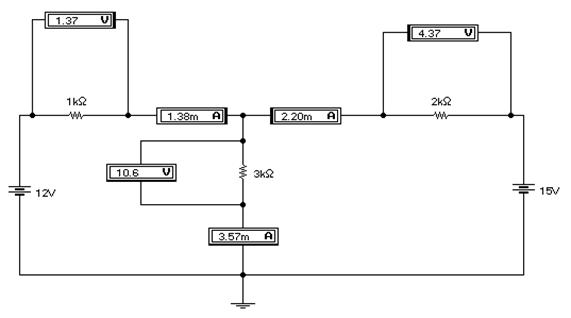
Rice. 2.1. Circuit diagram assembled in Electronics Workbench
On virtual measuring instruments we see the following readings (Fig. 2.1): I1=1.38mA, I2=2.20mA, In=3.57mA; U1 = 1.37V, U2 = 4.37V, Un = 10.6V. Let's write them down in the table. 2.
2.2. Let's calculate all currents and voltages in the circuit using the formulas of Ohm's and Kirchhoff's laws.
First, let's determine the currents in the branches. Using the superposition method, we exclude the source of emf E2 from the circuit:
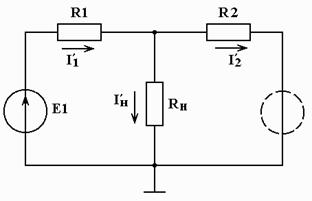
Let's find the equivalent circuit resistance:
Currents in two parallel branches:
![]()
Now let’s exclude the source of EMF E1:
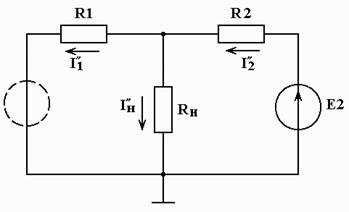
Let's calculate the currents:
Using the superposition method, we calculate the currents in the branches of the circuit:
Let's determine the voltage:
Let's enter the calculated results of currents and voltages into the table. 2.
To compare the measured and calculated results, we determine the relative measurement errors:
![]()
![]()
![]()
![]()
![]()
table 2
Values of currents and voltages in the circuit under study
Measured values | ||||||
Calculated values | ||||||
Relative measurement error |
2.3. By changing the value of EMF E1, we will try to ensure that the current through resistor R1 becomes zero. This happened when (see Fig. 2.4)
E1 = 8.98979 V » 8.99 V.
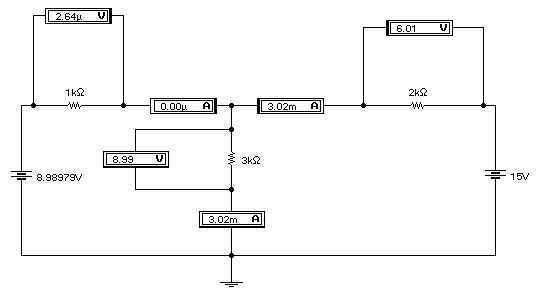
Rice. 2.2. Diagram of a circuit in which the current through resistor R1 becomes zero
Conclusion
As a result of the work done, the following conclusions can be drawn:
1. Comparing the measured values of currents and voltages in the circuit with those calculated according to Ohm’s and Kirchhoff’s laws, we were convinced that they really work.
2. The values of the measured currents and voltages in the circuit differ from those calculated due to the imperfection of the measuring instruments, which have their own resistance.
3. In our case, in circuit 2, both sources supply energy to the load.
4. When two sources are connected to a circuit, one of them may not give out its energy, but take it from the other, depending on the voltage on this source. For example, in our case this voltage was 8.99 V.
.
Let the tension vector be directed along the axis Oh, then the acceleration of the particle is also directed along this axis and is equal to . If the initial velocity of the particle is zero, then at the moment of time t it is equal to , and average speed half as much, over a certain period of time τ it is equal
Let's accept this model. We will assume that moving charged particles collide with other particles after the same time τ, which can be identified with the average time between collisions. We will assume that, on average, as a result of a collision, the particles stop, and after that they again begin to move in the electric field with zero initial speed. For this reason, we can assume that particles move in an electric field with an average speed given by formula (1).
|
|
Current strength is the charge transferred by moving particles per unit time, and current density is equal to the current strength through a cross section of a conductor with an area equal to one. Let us find the connection between the current density and the speed of directional movement of particles. Let the particles move to the left with speed v (Fig. 1). During t they go the same way l= v t. Thus, during this time the cross section S the conductor will be crossed only by those particles that are separated from it by a distance less than or equal to l, i.e. those particles that are inside a cylinder of height l= v t and volume V = S(v t). If the particle concentration is n, then their number in this volume is equal to N = nV = nS(v t). Let the charge of one particle be equal q. Then in time t the total charge flows through the cross section of the conductor N particles equal Q = qN = qnS v t. Therefore, the current strength through the conductor is equal to , and the current density is .
In the case we are considering, the current density vector is directed in the direction of the applied field, i.e. along the axis Oh. Magnitude j is proportional to the average speed of directional movement, namely j= en a v n. Substituting a here v n from formula (1), we get:
![]() . (2)
. (2)
This expression is called Ohm's law in differential form. Magnitude
is called the electrical conductivity coefficient or simply the electrical conductivity of a given conductor, and the proportionality coefficient between the average speed of directional movement of charges a v n and the applied electric field strength E called the mobility of current carriers. From formula (2) it is clear that mobility is expressed as follows:
Electrical conductivity and mobility are related to each other by the relation: s = en l.
The meaning of Ohm's law is that the average speed of directional movement of current carriers is proportional to the electric field strength, i.e. is proportional to the force acting on the particles. Ohm's law is true for metals, semiconductors, electrolytes, i.e. for those substances in which current carriers experience a large number of collisions. Wherein this law is performed at not too strong fields, when the role of collisions is large. Ohm's law does not hold true for currents in a vacuum, since in this case the current carriers experience virtually no collisions. Ohm's law is fulfilled to a very limited extent in plasma, since the number of current carriers in plasma is usually not constant. Note that the expression for the electrical conductivity coefficient (3) corresponds to experiment much worse than Ohm’s law itself. This expression is more or less applicable for semiconductors or electrolytes, but is completely unsuitable for metals, while Ohm's law itself holds quite well for metals.
Usually in physics and especially in electrical engineering, Ohm's law is used in a different form - in the so-called integral form. Let's get the form of this law.
|
|
Checking Ohm's law for a section of a circuit and the entire circuit. Testing Kirchhoff's Law
Laboratory work
Goal of the work
You will practically be convinced of the physical essence of Ohm's law for a section of a circuit. Test Kirchhoff's laws empirically.
Equipment
Instrument panel No. 1. Stand.
Theoretical background
Calculation and analysis of electrical circuits can be carried out using the basic laws of electrical circuits, Ohm's law, Kirchhoff's first and second laws.
As experiments show, the current in a section of a circuit is directly proportional to the voltage in this section of the circuit and inversely proportional to the resistance of the same section - this is Ohm's law
Consider a complete circuit: the current in this circuit is determined by the formula (Ohm's law for a complete circuit). The current strength in an electrical circuit with one EMF is directly proportional to this EMF and inversely proportional to the sum of the resistance of the external and internal sections of the circuit.
According to Kirchhoff's first law, the algebraic sum of the currents of the connection branches at any nodal point of the electrical circuit is equal to zero.
According to Kirchhoff's second law, in any closed circuit of an electrical circuit, the algebraic sum of the EMF is equal to the algebraic sum of the voltage across all resistor elements of the circuit.
Work order:
Familiarize yourself with the instruments and stand to perform the work. Connect the power cord to a power source.
Connect the source to the stand, changing the resistance of the circuit with a variable resistor and measure the current and voltage. We enter the results into a table. Make the necessary calculations
On the stand is “Kirchhoff’s law”. Change the circuit resistance. The results of the experiments are entered into the table. Make the necessary calculation
Rice. 1. Ohm's law for a section of a circuit
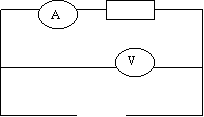

Fig.2. Kirchhoff's first law
Table 1
|
Observational data |
Calculation results |
|||
|
U total |
||||
|
3,3 |
||||
|
1,5 |
3,2 |
|||
|
3,1 |
Table 2
|
Observational data |
Calculation results |
|||||||
|
R 1 |
R 2 |
I 1 |
I 2 |
I 3 |
I 4 |
I 2 +I 3 |
U 1 |
U 2 |
|
0,7 |
2,1 |
|||||||
|
0,7 |
2,1 |
![]()
E 1 =3(1+0.1)=3.3; E 2 =2(1.5+0.1)=3.2; E 3 =1(3+0.1)=3.1
![]()
U 1 =2*1=2; U 2 =2*1=2; U 1 =3*0.7=2.1; U 2 =1*2=2
Conclusion
It has been proven experimentally and by calculation that the current strength in an electrical circuit with one EMF is directly proportional to this EMF and inversely proportional to the sum of the resistances of the external and internal sections of the circuit. According to Kirchhoff's first law, the current at the input of the circuit is equal to the current at the input of the circuit. The sum of the currents on the branches of the circuit is equal to the current at the output of the circuit.
Answers to Control questions
Ohm's law for a complete circuit considers the impedance of the entire circuit, while Ohm's law for a section of a circuit considers only that section of the circuit. Both Ohm's laws show the dependence of current on resistance - the greater the resistance, the lower the current and EMF, or vice versa.
To create voltage in a circuit, the movement of charges inside the current source is necessary, and this occurs only under the influence of forces applied from the outside. In the absence of current in the circuit, the EMF is equal to the potential difference of the energy source, therefore a voltmeter connected to this circuit shows the EMF, not the voltage.
I - Kirchhoff's law (used for calculations of complex electrical circuits): the sum of currents arriving at a nodal point is equal to the sum of currents leaving it, and the direction of currents to the point is considered positive, and from it - negative. Or the algebraic sum of the currents at the nodal point of the electrical circuit is equal to zero.
II – Kirchhoff’s law (for any electrical circuit): the algebraic sum of all EMFs is equal to the algebraic sum of the resistance voltage drops connected in series.
E 1 + E 2 +…+ E n =I 1 R 1 +I 2 R 2 +…+I n R n
Laboratory work
Goal of the work
You will practically be convinced of the physical essence of Ohm's law for a section of a circuit. Test Kirchhoff's laws empirically.
Equipment
Instrument panel No. 1. Stand.
Theoretical background
Calculation and analysis of electrical circuits can be carried out using the basic laws of electrical circuits, Ohm's law, Kirchhoff's first and second laws.
As experiments show, the current in a section of a circuit is directly proportional to the voltage in this section of the circuit and inversely proportional to the resistance of the same section - this is Ohm's law
Consider a complete circuit: the current in this circuit is determined by the formula (Ohm's law for a complete circuit). The current strength in an electrical circuit with one EMF is directly proportional to this EMF and inversely proportional to the sum of the resistance of the external and internal sections of the circuit.
According to Kirchhoff's first law, the algebraic sum of the currents of the connection branches at any nodal point of the electrical circuit is equal to zero.
According to Kirchhoff's second law, in any closed circuit of an electrical circuit, the algebraic sum of the EMF is equal to the algebraic sum of the voltage across all resistor elements of the circuit.
Work order:
Familiarize yourself with the instruments and stand to perform the work. Connect the power cord to a power source.
Connect the source to the stand, changing the resistance of the circuit with a variable resistor and measure the current and voltage. We enter the results into a table. Make the necessary calculations
On the stand is “Kirchhoff’s law”. Change the circuit resistance. The results of the experiments are entered into the table. Make the necessary calculation
Rice. 1. Ohm's law for a section of a circuit
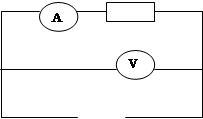
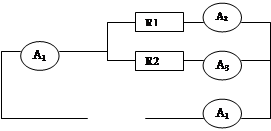
Fig.2. Kirchhoff's first law
| Observational data | Calculation results | |||
| R | U | I | E | |
| 1 | 3 | 3 | 3 | 3,3 |
| 1,5 | 3 | 2 | 3 | 3,2 |
| 3 | 3 | 1 | 3 | 3,1 |
| Observational data | Calculation results | |||||||
| 2 | 0,7 | 4 | 1 | 3 | 4 | 4 | 2 | 2,1 |
| 1 | 1 | 4 | 2 | 2 | 4 | 4 | 2 | 2 |
| 0,7 | 2 | 4 | 3 | 1 | 4 | 4 | 2,1 | 2 |
![]()
E 1 =3(1+0.1)=3.3; E 2 =2(1.5+0.1)=3.2; E 3 =1(3+0.1)=3.1
![]()
U 1 =2*1=2; U 2 =2*1=2; U 1 =3*0.7=2.1; U 2 =1*2=2
It has been proven experimentally and by calculation that the current strength in an electrical circuit with one EMF is directly proportional to this EMF and inversely proportional to the sum of the resistances of the external and internal sections of the circuit. According to Kirchhoff's first law, the current at the input of the circuit is equal to the current at the input of the circuit. The sum of the currents on the branches of the circuit is equal to the current at the output of the circuit.
Answers to security questions
Ohm's law for a complete circuit considers the impedance of the entire circuit, while Ohm's law for a section of a circuit considers only that section of the circuit. Both Ohm's laws show the dependence of current on resistance - the greater the resistance, the lower the current and EMF, or vice versa.
To create voltage in a circuit, the movement of charges inside the current source is necessary, and this occurs only under the influence of forces applied from the outside. In the absence of current in the circuit, the EMF is equal to the potential difference of the energy source, therefore a voltmeter connected to this circuit shows the EMF, not the voltage.
I - Kirchhoff's law (used for calculations of complex electrical circuits): the sum of currents arriving at a nodal point is equal to the sum of currents leaving it, and the direction of currents to the point is considered positive, and from it - negative. Or the algebraic sum of the currents at the nodal point of the electrical circuit is equal to zero.
II – Kirchhoff’s law (for any electrical circuit): the algebraic sum of all EMFs is equal to the algebraic sum of the resistance voltage drops connected in series.
E 1 + E 2 +…+E n =I 1 R 1 +I 2 R 2 +…+I n R n
LABORATORY WORK No. 16
CHECKING OHMS'S LAW FOR AC CURRENT
GOAL OF THE WORK: determine inductive and capacitive reactance, check Ohm's law for alternating current.
DEVICES AND ACCESSORIES: AC voltage source, choke coil, capacitors, rheostat, milliammeters and voltmeters alternating current, connecting wires, key.
BRIEF THEORY
Ohm's law was established for direct current, but it remains valid for instantaneous values of changing current and voltage, unless their changes occur too quickly. Currents that satisfy this condition are called quasi-stationary.
An alternating current is called quasi-stationary if, with a sufficient degree of accuracy, it can be assumed that the magnetic field of this current at each moment of time has the same values that it has in the case of a direct current of the same magnitude.
The processes occurring in alternating current circuits are somewhat different from the processes observed in direct current circuits.
If to a section of the circuit containing only active resistance R o, alternating voltage is applied:
U m - voltage amplitude;
- cyclic frequency,
then a current arises in this section, the instantaneous value of which is determined by the relation:
 ,
(2)
,
(2)
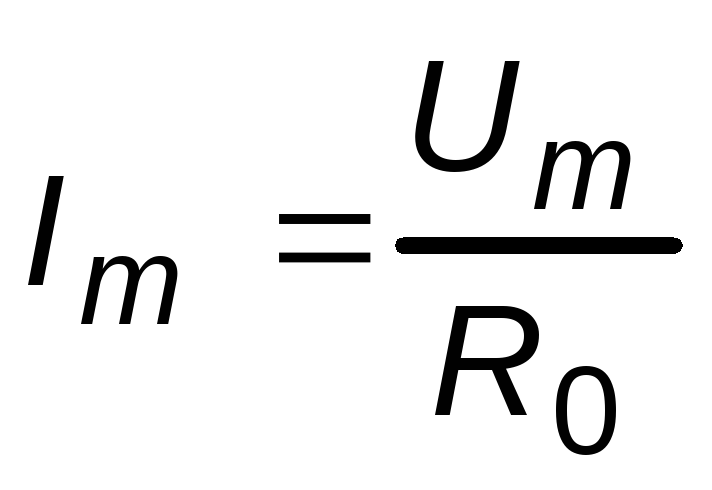 - current amplitude.
- current amplitude.
Equations (1) and (2) show that the phase of voltage and current is the same, i.e. voltage and current simultaneously reach maximum values and simultaneously turn to zero.
R 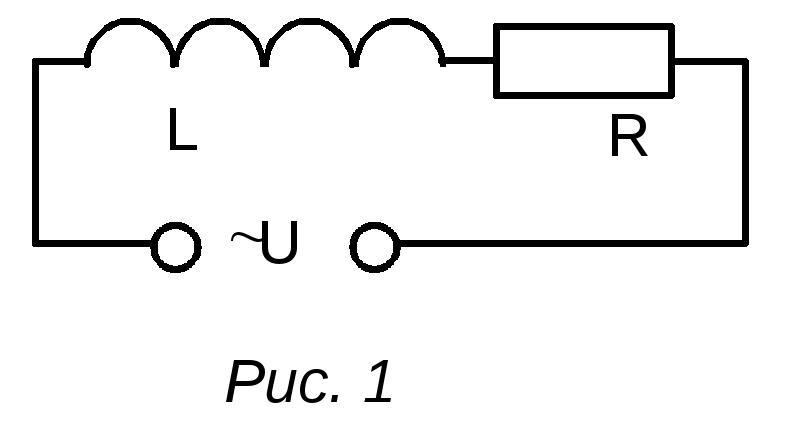 Let's consider an alternating current circuit that contains an inductor L and active resistance R(Fig. 1).
Let's consider an alternating current circuit that contains an inductor L and active resistance R(Fig. 1).
The variable EMF E will cause a sinusoidal current:
 . (3)
. (3)
When current flows through the coil, a voltage drop occurs across the active resistance U R, and at the ends of the coil a self-inductive emf appears:
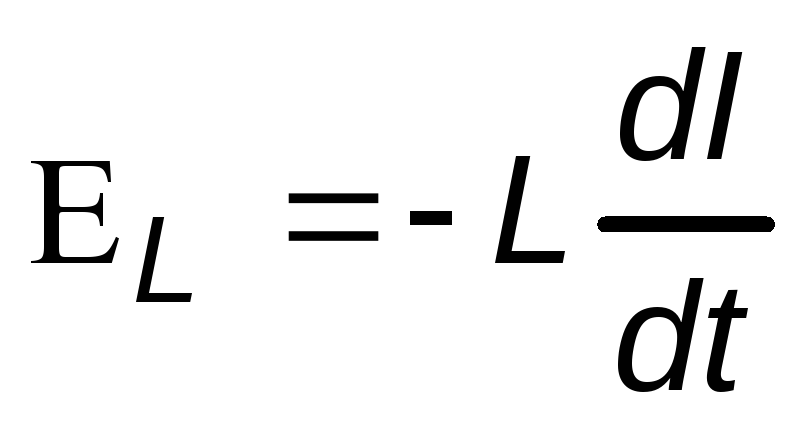 .
.
According to Kirchhoff's second law, the resulting external voltage in the circuit is determined by the sum U R and L, external EMF is written in the following form:
 .
.
Differentiating this equation, we get:
 - amplitude value of voltage across active resistance;
- amplitude value of voltage across active resistance;
 - amplitude value of the voltage across the inductance.
- amplitude value of the voltage across the inductance.
It follows that L performs the function of resistance:
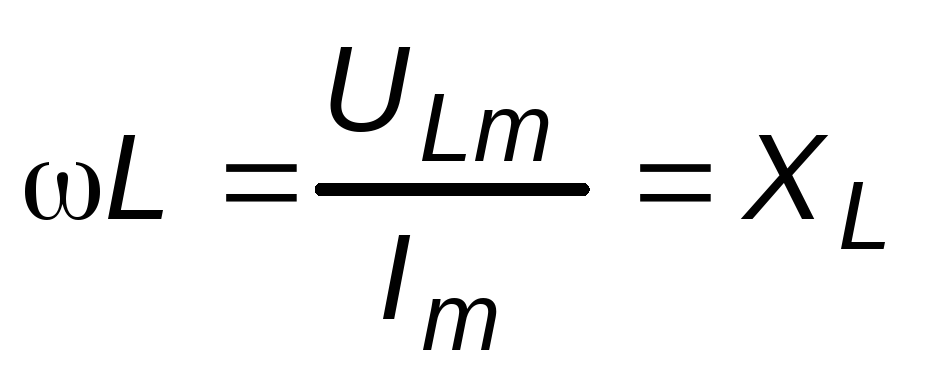 .
.
Size X L is called reactance.
Comparing expressions (3) and (4), we see that in the circuit under consideration the change in current lags behind the change in voltage by an angle of 0.5.
The physical reason for the occurrence of this phase difference is as follows: if the active resistance of a section of the circuit is zero, then the applied voltage exactly balances the self-induction emf and is equal to the latter with the opposite sign. But the self-induction emf is proportional not to the instantaneous value of the current, but to the speed of its change, which will be greatest at those moments when the current passes through zero. Therefore, the voltage maxima coincide with the current zeros, and vice versa.
WITH 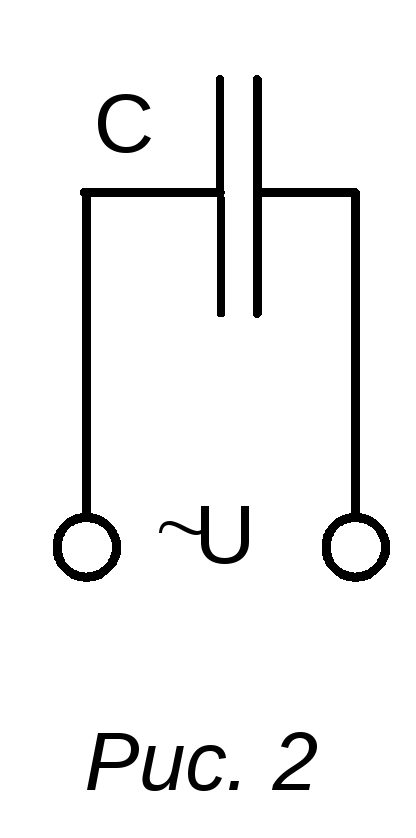 Let's connect the plates of a capacitor having a capacitance C, to an alternating voltage source (Fig. 2). The capacitor will begin to continuously recharge, and alternating current will flow in the circuit:
Let's connect the plates of a capacitor having a capacitance C, to an alternating voltage source (Fig. 2). The capacitor will begin to continuously recharge, and alternating current will flow in the circuit:
 . (5)
. (5)
Since the current in the supply conductors is equal to:
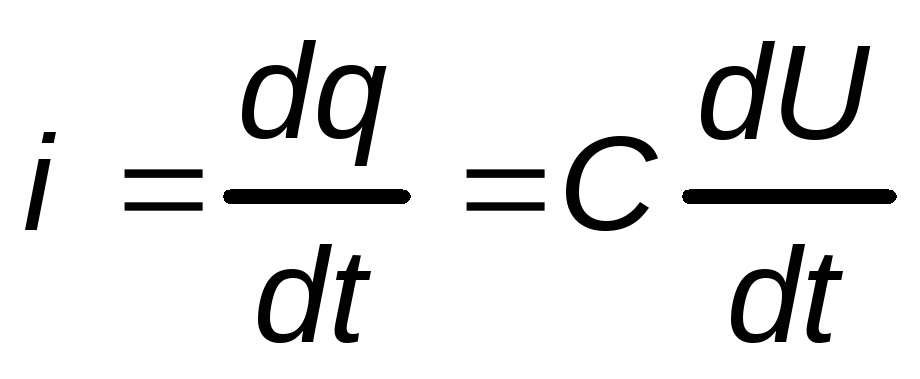 ,
,
then we get the differential equation:
 .
.
Taking into account the fact that there is no constant voltage source in the circuit, the solution to this equation has the form:
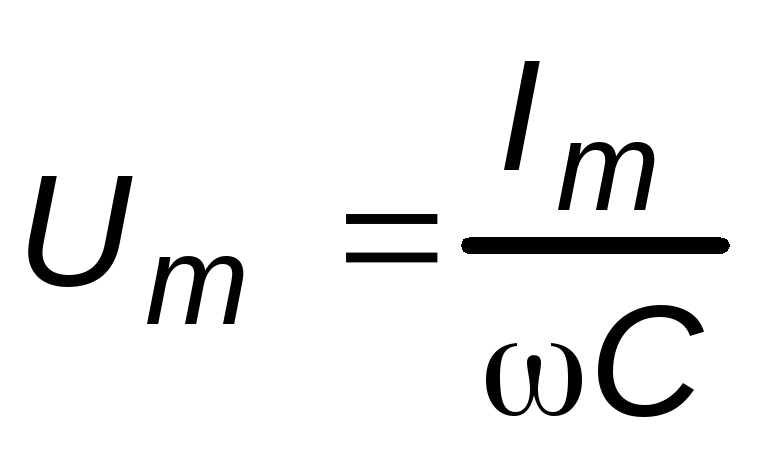 - amplitude value of the voltage on the capacitor.
- amplitude value of the voltage on the capacitor.
Magnitude 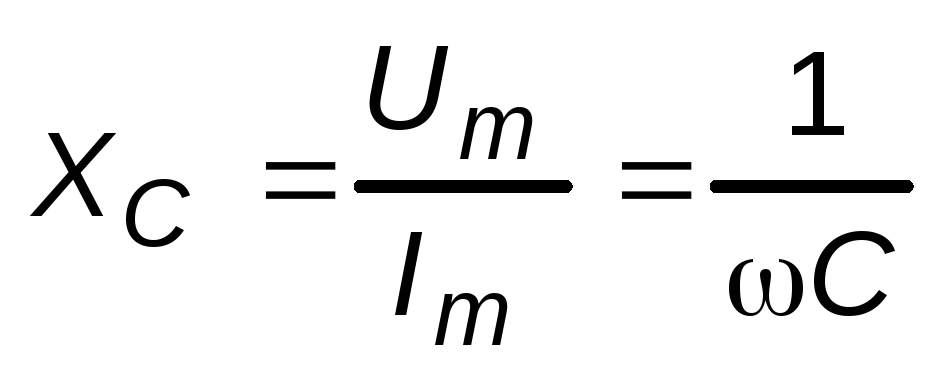 called capacitance. Unlike active resistance, capacitive reactance on average does not consume power, since the capacitor either takes energy from the circuit when charging, or releases it back into the circuit when discharging.
called capacitance. Unlike active resistance, capacitive reactance on average does not consume power, since the capacitor either takes energy from the circuit when charging, or releases it back into the circuit when discharging.
Comparing expressions (5) and (6), we see that the current phase leads the voltage phase by 0.5.
P  the appearance of a phase difference=0.5 between the voltage on the capacitor plates and the current through it is associated with the processes of charging and discharging the capacitor. If the current is zero when the capacitor is fully charged, then the capacitor has a charge transferred by the current in the previous period of time, and the voltage on its plates reaches its greatest value. When the capacitor charge and, therefore, the voltage becomes zero, the current has its maximum value.
the appearance of a phase difference=0.5 between the voltage on the capacitor plates and the current through it is associated with the processes of charging and discharging the capacitor. If the current is zero when the capacitor is fully charged, then the capacitor has a charge transferred by the current in the previous period of time, and the voltage on its plates reaches its greatest value. When the capacitor charge and, therefore, the voltage becomes zero, the current has its maximum value.
If in the active resistance section R o a coil with inductance is connected in series with it L and a capacitor with a capacitance WITH(Fig. 3), then a phase shift occurs between the current and voltage, the instantaneous value of the current will be expressed by the relation:
 , (7)
, (7)
 ,
,
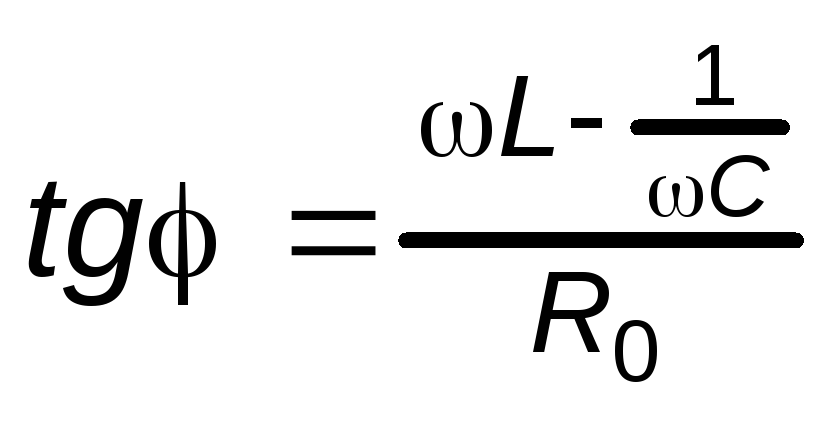 .
.
The ratio of the voltage amplitude to the current amplitude is called the circuit impedance for alternating current:
 , (8)
, (8)
R 0 - active resistance,
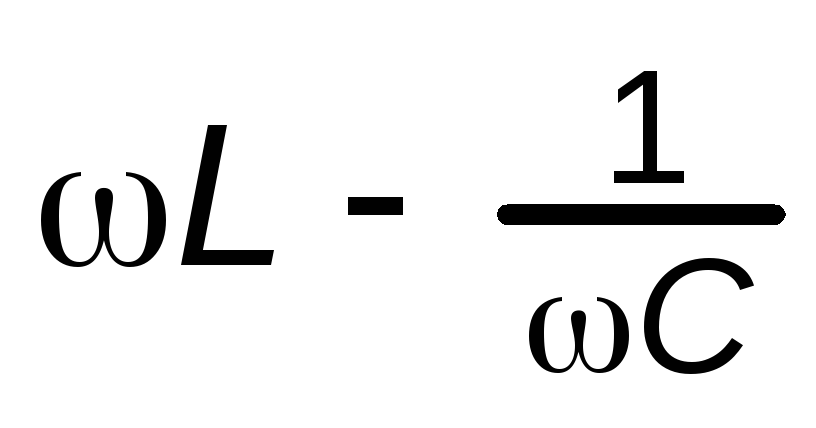 - circuit reactance.
- circuit reactance.
Instruments used in alternating current circuits measure effective value current and voltage, but since:
 ;
;
 ,(9)
,(9)
then it is obvious that the same relationship between the effective values of current and voltage is maintained as between the amplitude ones:
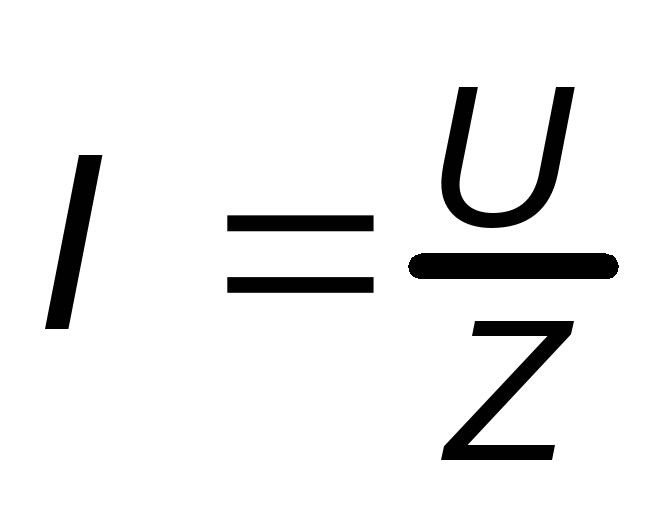 .
.
progress
TASK 1. Measuring the inductance of coil sections.
Determine the active resistance of the coil section (see description of the throttle coil).
Assemble the circuit according to the diagram in Fig. 4, where L- different sections of the coil.
Set the rheostat to maximum resistance and turn on the AC voltage source.
For each section, measure the voltage at three current values. Record the obtained data in the table. 1.
Determine the section resistance Z L and inductance of the corresponding sections.
Table 1
|
Number of turns | ||||||
TASK 2. Determining the capacitance of capacitors.
Assemble the circuit according to the diagram in Fig. 5 for capacitor C 1.
Measure the voltage across the capacitor at three current values. Record the measurement results in the table. 2.
Z Csr and calculate the capacitance of the capacitor. Write the calculation results in the table. 2.
Repeat steps 1-3 for capacitor C 2.
Repeat steps 1-3 for series and parallel connections of capacitors C 1 and C 2.
Draw conclusions based on the results obtained.

table 2
|
Connection diagram | ||||||
TASK 3. Checking Ohm's law for alternating current.
Assemble the circuit according to the diagram in Fig. 6.
Measure the voltage on a section of the circuit at three current values. Record the measurement results in the table. 3.
Determine the average resistance value of the section Z meas.avg.
Compare calculated using formula (8) Z calculated and measured Z Measurement avg resistance value. Write the calculation results in the table. 3.
Draw conclusions based on the results obtained.

Table 3
|
Z meas.avg, Ohm | ||||||||
CONTROL QUESTIONS.
Is it always possible to say that ohmic and active resistances are equal to each other?
What is the cyclic frequency of the city power grid?
How to physically explain that inductive reactance increases with increasing frequency, and capacitive reactance decreases?
What will be the phase shift between current and voltage if the section contains only capacitance?
What will be the phase shift between current and voltage if the section contains only inductive reactance?
How is the total capacitance expressed when capacitors are connected in series and in parallel?
In what units must inductance and capacitance be expressed in order for impedance to be expressed in Ohms?
Derive a formula for calculating inductance according to the data in table. 1.
Derive a formula for calculating capacity according to the data in table. 2.
Draw vector diagrams for the following cases:


Alekseev O.L., Voronchikhin L.D., Kovrizhnykh Yu.T.. Guide to laboratory work for the course of general physics: Electricity. – Sverdlovsk, 1974. – p. 188-194.
Savelyev I.V.. General physics course. Electricity. – M.: Nauka, 1970. – T.II. - With. 343-346.
Evsyukov A.A. Electrical engineering: Textbook. manual for physics students specialist. ped. Inst. – M.: Education, 1979. – p. 10-27.

